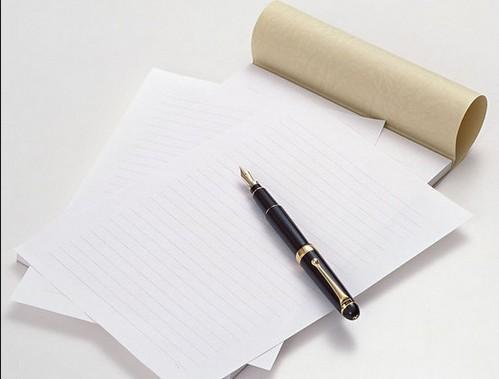Research,and,Development,of,Foshou,Yam,and,Yacon,Compound,Beverage
Erxiang HU Siying CHEN Peng WU Ting HU



Abstract [Objectives] Foshou yam and yacon were used as raw materials to prepare a compound beverage.
[Methods]With Foshou yam and yacon as raw materials, single factor experiments and response surface method were used to optimize the optimal processing parameters of the compound beverage.
[Results] The best processing parameters of the compound beverage were Foshou yam pulp 20%, yacon juice 30%, sugar 6% and citric acid 0.05%. Under the best conditions, the compound beverage scored 91.7 points, with a light yellow color, delicate taste, good Foshou yam and yacon flavor, moderate sour and sweet taste.
[Conclusions]This study provides a new way for the development and utilization of Foshou yam and yacon.
Key words Foshou yam; Yacon; Compound beverage; Response surface methodology
Received: January 23, 2021 Accepted: March 5, 2021
Supported by the Scientific Research Program Guiding Project of the Department of Education of Hubei Province (B2020166).
Erxiang HU (1998-), male, P. R. China, major: food science and engineering.
*Corresponding author. E-mail: 843076915@qq.com.
Foshou yam is produced in Wuxue, Hubei. It is rich in starch, protein, glucose and a variety of trace elements. It is rich in nutrients, and has the functions of curing various impairments due to deficiencies, treating exhaustion or lesion of the five internal organs and seven damages, treating low back pain, relieving irritability, and invigorating deficiency of heart and qi[1]. Yacon is called "underground fruit"[2]. It contains 20 kinds of amino acids, mineral elements, flavonoids, phenolic acids, polyphenol oxidase and other active substances needed by the human body. It has a lot of juice and a very crisp and sweet taste. It is also low in calories, and thus known as the "fruit star", which people will never tire of eating.
Beverage is a kind of convenience food, which not only meets peoples daily consumption needs, but also has a health care effect. At present, there have been many studies and reports on beverages in China[3-11]. Liu et al.[3] developed a compound beverage with delicate taste, sweet and sour taste, using cucumber and yam as raw materials. Chen[7] developed a compound beverage with unique flavor and rich taste using apple and yam as raw materials through orthogonal experiments. However, there is no related research on compound beverages combining Foshou yam and yacon. Therefore, in this study, with Foshou yam and yacon as raw materials, a compound beverage was developed by optimizing the processing parameters through single factor experiments and response surface methodology. This study provides a new way for the development and utilization of Foshou yam and yacon.
Materials and Methods
Materials and experimental equipment
Foshou yam, yacon, edible salt: commercially available; citric acid (food grade): Zhengzhou Cangyu Food Chemical Co., Ltd.; calcium chloride (food grade), D-sodium erythorbate (food grade): Henan Wanbang Industrial Co., Ltd.
Juicer: commercially available, Midea; Homogenizer (KAT18): Aika (Guangzhou) Instrument Equipment Co., Ltd.; electronic balance (CP413): Ohaus Instrument (Changzhou) Co., Ltd.; water bath (HH-6): Changzhou Guohua Electric Co., Ltd.
Experimental method
Foshou yam was prepared into a yam pulp by peeling, cleaning, color protection, mashing, and beating. Yacon was prepared into a yacon juice by pretreating, color protection, soaking, scalding, beating and filtration. Then, the yam pulp, yacon juice, citric acid, white sugar and stabilizer were mixed and processed into the finished product after homogenization, filling, sterilization and cooling.
Preparation of Foshou yam pulp
Cleaning: The dirt and dust on the surface of the Foshou yam were washed off with water.
Cutting: The washed Foshou yam was cut into small pieces of 1-2 cm.
Color protection: The yam pieces were quickly put into a color protection liquid to protect the color, at room temperature for 30 min.
Beating: Beating was performed according to the mass ratio of Foshou yam to water of 1 g∶8 g.
Filtration: The paste was filtered with 120-mesh filter cloth to prepare yam pulp.
Preparation of yacon juice
Selection and cleaning: Fresh, medium-sized yacon with thick flesh and thin skin, and no cracks on the surface was chosen, and the dirt and debris attached to the surface of yacon were washed away.
Cutting: The yacon was peeled with a paring knife and then cut into rectangular pieces uniform and moderate in size using a knife.
Color protection: The yacon pieces were quickly put in 0.25% citric acid water at a temperature of 80 ℃ and protect the color for 3 min.
Juicing and filtering: The yacon fruit pieces were taken put, washed with running water to remove the color protection liquid, and made into the juice according to the mass ratio of yacon to water of 1 g∶4 g with a juicer. The obtained paste was filtered with a 120-mesh filter cloth to prepare a yacon juice, which was added with 0.02% citric acid for color protection. The yacon juice was then sterilized and naturally cooled at room temperature for later use.
Mixing and blending
The Foshou yam pulp, yacon juice, white sugar, and citric acid were mixed in proportions and a set of best ratios were selected.
Sensory evaluation standards of Foshou yam and yacon compound beverage
Sensory scoring was carried out according to the color, aroma, taste, and solubility of the Foshou yam and yacon compound beverage. The sensory evaluation standards are shown in Table 1[12].
Design of single factor experiment
Determination of the addition amount of Foshou yam pulp
In order to explore the effects of the addition of Foshou yam pulp, yacon, white sugar, and citric acid on the sensory quality of the Foshou yam and yacon compound beverage, three of them were fixed, and the remaining one was changed as following: the addition amount of Foshou yam (10%, 20%, 30%, 40%, 50%), the addition amount of yacon (10%, 20%, 30%, 40%, 50%), the addition amount of white sugar (2%, 4 %, 6%, 8%, 10%) and the addition amount of citric acid (0.01%, 0.03%, 0.05%, 0.07%, 0.09%), for single factor experiments.
Response surface analysis
On the basis of the single factor experiments, the sensory value score (Y) was used as the response value of the investigation, and the addition amount of Foshou yam pulp (A), the addition amount of snow lotus juice (B), the addition amount of white sugar (C), and the addition amount of citric acid (D) were the investigation factors. Box-Behnken in the Design-Expert software was used to design a four-factor three-level experiment, and the response surface methodology was used to optimize the best process parameters of the Foshou yam and yacon compound beverage.
Results and Analysis
Results and analysis of single factor experiments
The effect of the addition amount of Foshou yam pulp on sensory score
The effect of the addition of Foshou yam pulp on the sensory score is shown in Fig. 1. It can be seen from the figure that as the addition of Foshou yam pulp increased, the sensory score showed a trend of first increasing and then decreasing. When the addition amount of Foshou yam was 20%, the sensory score of the compound beverage was the highest, and the taste and flavor of the compound beverage reached the best. With the further increase of the amount of Foshou yam pulp, the taste of the compound beverage became lighter, the yam smell became heavier, and the sensory score of the compound beverage decreased. Therefore, the optimum dosage of Foshou yam pulp was 20%. Therefore, 10%, 20%, and 30% were selected as the 3 levels of Foshou yam pulp addition in the Box-Behnken central composite design.
The effect of the addition amount of yacon juice on sensory score
The effect of the addition amount of yacon juice on the sensory score is shown in Fig. 2. It can be seen from the figure: with the increase of the addition amount of yacon juice, the sensory score showed a trend of first increasing and then decreasing. When the addition amount of yacon juice was 30%, the compound beverage had the highest sensory score. When the addition amount of yacon juice was less than 30%, the compound beverage taste was insufficient; and when the addition amount exceeded 30%, the taste of the compound beverage became worse. Therefore, the optimal addition amount of yacon juice was selected as 30%, and 20%, 30% and 40% were selected as the 3 levels of the addition amount of yacon juice in the Box-Behnken central composite design.
The effect of the addition amount of white granulated sugar on sensory score
The effect of the addition amount of white sugar on the sensory score is shown in Fig. 3. It can be seen from Fig. 3 that with the increase in the addition amount of white sugar, the sensory score showed a trend of first increasing and then decreasing. When the amount of white sugar added was 6%, the sensory score of the compound beverage was the highest. When the amount of white granulated sugar added was less than 6%, the sweetness might be not enough. With the further increase of the addition amount of white granulated sugar, the taste of the compound beverage became delicate, the sweetness was prominent, and the flavor of Foshou yam and yacon was not obvious. Therefore, the optimal amount of white sugar added was 6%, and 4%, 6% and 8% were selected as the 3 levels of white sugar added in the Box-Behnken central composite design.
The effect of the addition amount of citric acid on sensory score
The effect of the addition amount citric acid on the sensory score is shown in Fig. 4. It can be seen from Fig. 4 that as the addition amount of citric acid increased, the sensory score showed a trend of first increasing and then decreasing. When the addition amount of citric acid was 0.05%, the sensory score of the compound beverage was the highest. When the amount of citric acid added was less than 0.05%, the sour taste was not obvious; and with the further increase of the addition amount of citric acid, the taste of the compound beverage became too prominent, and the flavor of Foshou yam was not obvious. Therefore, the optimal addition amount of citric acid was selected as 0.05%, and 0.03%, 0.05% and 0.07% were selected as the 3 levels of citric acid addition in the Box-Behnken central composite design.
Results and analysis of response surface experiments
Factor level selection
Combining the results of the single factor experiments, and taking the sensory score of the Foshou yam and yacon compound beverage as the response value (Y), Box-Behnken was used for experimental design with the addition amounts of Foshou yam pulp (A), yacon juice (B), white sugar (C) and citric acid (D) as the process parameters. The Design-Expert 8.0.6 software was used to design the four-factor three-level response surface optimization experiments, and the prediction model required for the response surface experiment analysis was established. The factor levels are shown in Table 2. The experimental design results are shown in Table 3.
Response surface design and experimental results
Results and analysis of response surface experiments
Data in Table 3 were subjected to analysis of variance, obtaining a quadratic polynomial regression of the model: Sensory evaluation=89.98-0.40A+0.27B-0.21C-0.092D-0.20AB+0.52AC+0.13AD-0.050BC+0.15BD- 0.1CD-3.90A2-2.12B2-1.74C2-1.09D2. The regression analysis of variance is shown in Table 4.
The results of the variance analysis of the response surface regression model are shown in Table 4. From Table 4, we can see that the P value of the model was <0.000 1, and the response surface regression model reached a very significant level; the P value of the lack of fit item was 0.619 1> 0.05, and the lack of fit item was not significant, indicating that the regression model could fit the actual measured value well. The correlation coefficient R2=0.967 1>0.9 indicates that the experimental error was small and the model had a good degree of fitting. The corrected correlation coefficient RAd2j=0.934 7 showed that the model could explain 93.47% of the change in the response value in the regression equation. The P value can be used to test the importance of the influencing factors, and its value can also reflect the interaction between the influencing factors. The smaller the P value, the more important the influencing factors are, so A, A2, B2, C2 and D2 had extremely significant effects on the Y value (P<0.000 1), A had a highly significant effect on the Y value (P<0.01), B and AC had significant effects on the Y value (P<0.05), while D, AB, and AD, BC, BD, CD had no significant effects on the Y value. According to the analysis of variance results, the order of the primary and secondary effects of various response factors on the sensory score of the Foshou yam and yacon compound beverage was A>B>C>D.
Response surface analysis of multi-factor interaction
The effect of a factor on the sensory score could be judged from the side boundary of the factor in the 3D graph. The flatter the side boundaries of the factors, the lower the effects of the factors on the sensory score. Fig. 5 shows that when C and D were 6% and 0.05%, respectively, the increase of B was smaller than that of A, indicating that the sensory effect on the Foshou yam and yacon compound beverage was A>B. Fig. 6 shows that when B and D were 30% and 0.05%, respectively, the increase of C was maller than that of A, indicating that the sensory effect on the Foshou yam and yacon compound beverage was in order of A>C. Fig. 7 shows that when B and C were 30% and 6%, respectively, the increase of D was smaller than that of A, indicating that the sensory effect on the Foshou yam and yacon compound beverage was in order of A>D. Fig. 8 shows that when A and D were 20% and 0.05%, respectively, the increase of C was smaller than that of B, indicating that the sensory effect on the Foshou yam and yacon compound beverage was in order of B>C. Fig. 9 shows that when A and C were 20% and 6%, respectively, the increase of C was smaller than that of B, indicating that the sensory effect on the Foshou yam and yacon compound beverage was in order of B>D. Fig. 10 shows that when A and B were 20% and 30%, respec-tively, the increase of D was smaller than that of C, indicating that the sensory effect on the Foshou yam and yacon compound beverage was in order of C>D.
Verification results
According to the prediction of the regression model, the optimal combination formula of Foshou yam and yacon compound beverage was Foshou yam pulp 20%, yacon juice30%, white sugar 5.86%, and citric acid 0.05%, and the evaluation reached 90 points. In consideration of the operability of the experiment, it was decided to adjust the process parameters in the actual experiment to 20% of Foshou yam pulp, 30% of yacon juice, 6% of white sugar, and 0.05% of citric acid. On this basis, three sets of parallel verification experiments were carried out, and finally the sensory score of the Foshou yam and yacon compound beverage was 91.7 points, which was relatively close to the predicted value, which indicated that the model fit well and had certain practical guiding significance.
Conclusions and Discussion
In this study, the optimal addition amounts of Foshou yam pulp, yacon juice, citric acid, and white sugar were determined through single factor experiments. On the basis of single factor experiments, the optimal process of Foshou yam and yacon compound beverage was obtained by response surface analysis, and the optimal process conditions obtained were: 20% of Foshou yam pulp, 30% of yacon juice, 6% of white sugar, and 0.05% of citric acid. Under these conditions, the produced Foshou yam and yacon compound beverage was not only sweet and sour, but also had a delicate taste and longer storage time, which is of great significance to the research and development of compound beverages.
References
[1] CHEN Y. The pharmacological effects of yam in product development[J]. Sichuan Food and Fermentation, 2015, 51(1): 60-62, 69. (in Chinese)
[2] LI DH. Pure natural health fruit star yacon[J]. Beijing Agriculture, 2007(4): 38. (in Chinese)
[3] LIU DD, HUANG SM. Development of cucumber yam compound beverage[J]. Green Science annd Technology, 2018(24): 257-258, 260. (in Chinese)
[4] LIAO XB, CAO CJ, YE TW, et al. Preparation of Chinese Dioscorea batatas (yam) nutritious drink[J]. Journal of Shantou University: Natural Science Edition, 2014, 29(2): 52-59. (in Chinese)
[5] JIN SY, LIN XR. The color protection and stability process of yam beverage[J]. Food Engineering, 2012(3): 23-25. (in Chinese)
[6] JU J, QIAO Y, LIU HM, et al. Optimization of yams instant solid beverage technology by response surface methodology[J]. The Beverage Industry, 2016, 19(6): 31-37. (in Chinese)
[7] CHEN Y. Study on compounded beverage of apple and Chinese yam[J]. The Beverage Industry, 2015, 18(6): 16-19. (in Chinese)
[8] ZHANG XY, ZHENG J. Development of functional yacon beverage[J]. Anhui Agricultural Science Bulletin, 2010, 16(23): 154-155. (in Chinese)
[9] XIONG XP, KUANG SR. Study on processing technology for compound beverage of Smallanthus sonchifolius and lemon[J]. Food Research and Development, 2015, 36(22): 71-74. (in Chinese)
[10] WANG LQ, LIU XF, WANG J. Development of yacon and probiotic functional milk beverage[J]. Farm Machinery, 2013(29): 75-77. (in Chinese)
[11] LI XX. Research on the technology of the flavor type of Saussurea beverage[J]. Journal of Anhui Agricultural Sciences, 2010, 38(18): 9764-9765, 9780. (in Chinese)
[12] WANG XM, LYU CX, JI XF, et al. Optimization of technological parameters for technology and stability of seabuckthorn and yam compound beverage by response surface analysis[J]. Journal of Bohai University: Natural Science Edition, 2018, 39(4): 335-344. (in Chinese)
上一篇:爱国主义教育需要丰富载体






